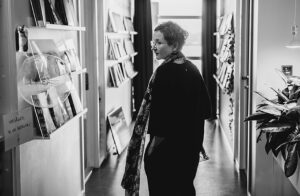Kristina Säfsten is Professor of Production Systems at the School of Engineering, Jönköping University, and is driven by her desire to learn and develop, both as a person and as a citizen. The road there leads through collaboration. Collaboration is time-consuming, but it also makes the work meaningful. It is a requirement for developing relevant knowledge. Collaboration lays the foundation for “democratic knowledge development” – a society that requires us to learn from and about each other.
Meeting across professional and disciplinary boundaries is an obvious way for Kristina Säfsten, or Kicki as most people call her, to conduct research. Already during her doctoral studies, when she was part of an interdisciplinary research school at Linköping University, she found meeting others rewarding. Having the opportunity to work with people who have different perspectives, experiences, and knowledge increases her motivation to learn more.



















